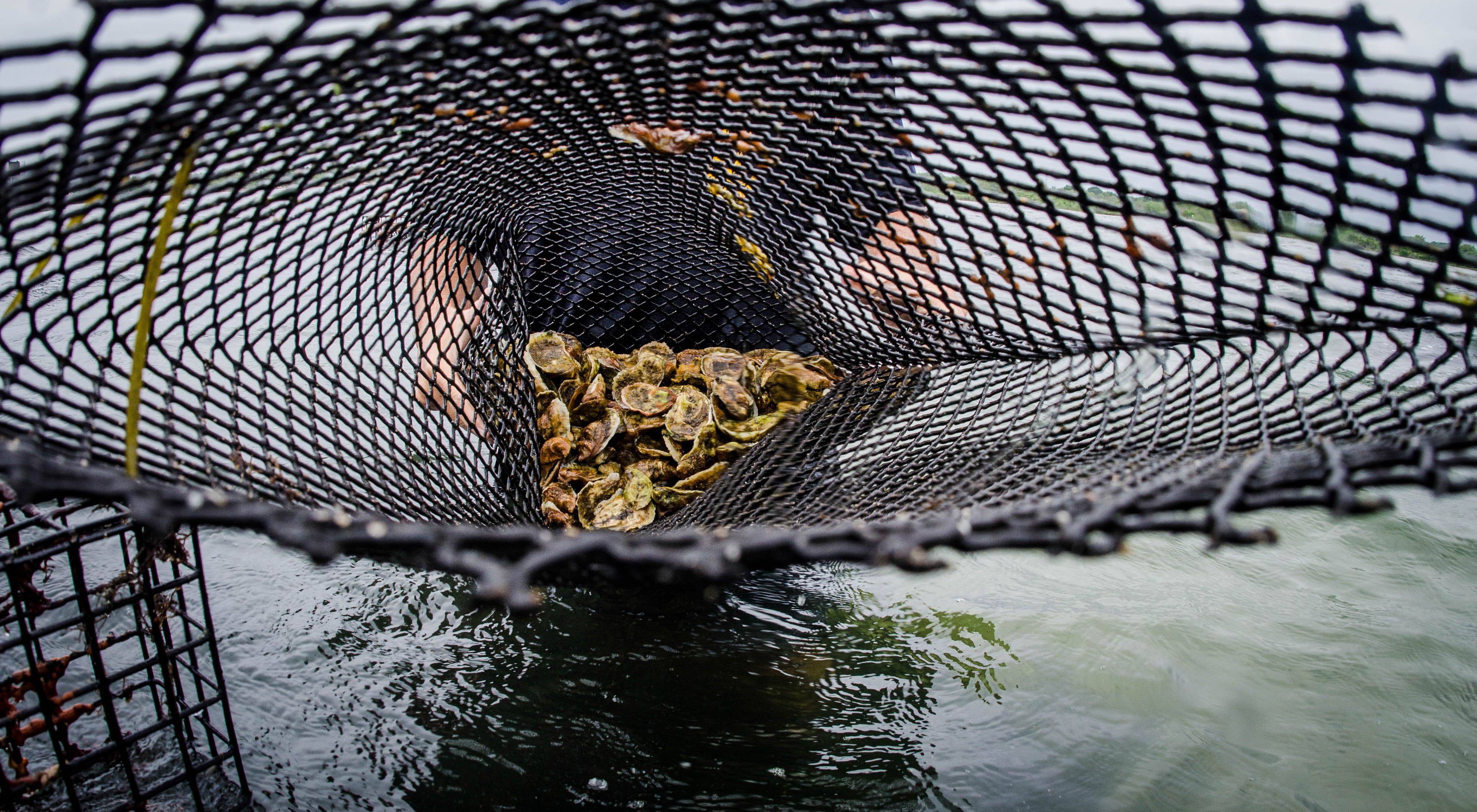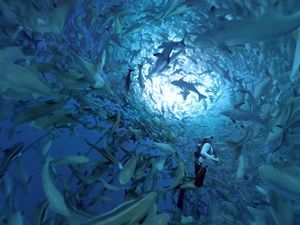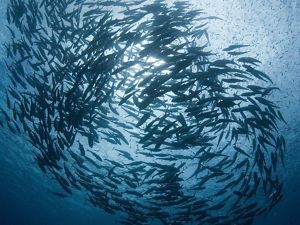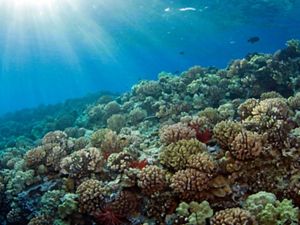How to Feed the Planet While Protecting the Ocean
Sustainable aquaculture could help increase seafood production while providing ecological and economic benefits.
KEY TAKEAWAYS:
Unsustainable fishing practices have depleted the world's fish stocks, a key source of protein for the global population—which is expected to reach up to 11 million by the century's end.
Despite its mixed reputation, aquaculture has the potential to increase seafood production sustainably while generating benefits for local economies and the ecosystems on which they rely.
Impact investors can drive the transformation needed to ensure that sustainable practices become business-as-usual in the aquaculture sector—already a growing multibillion-dollar industry.
What if I showed you evidence suggesting the global supply of beef, chicken or pork could collapse over the coming decades? You might well panic at the thought.
This threat, while not imminent for land-based animals, is very real for the ocean and the critical sources of wild seafood that we harvest from them. While most of us may think of land-based sources as providing the majority of our animal protein, the ocean’s contribution to human nutrition is incredibly important. Seafood provides as many as three billion people with their principal sources of dietary protein. And with the United Nations predicting a global population of 9.7 billion by 2050, and potentially as many as 11 billion by the end of this century, the number of people reliant on seafood for their diets is only likely to grow.
All of which makes the current state of the ocean—and warnings about what this could mean for many of our most significant fisheries—all the more worrying. Industrial-scale fishing has led to 90 percent of global fish stocks being fished to their maximum. This, combined with added stressors such as ocean acidification, climate-driven coral reef diebacks, microplastic pollution and coastal habitat destruction, is making it even more difficult for our ocean, one of Earth’s primary life-support systems, to produce food for a growing population. These pressures are unparalleled in human history, and the results could be devastating for many of the fisheries on which so many communities depend.
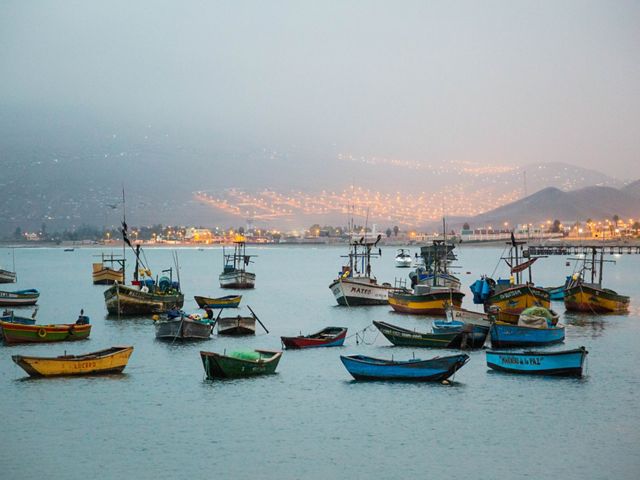
The situation becomes even more worrying when one bears in mind that many of the more seafood-dependent nations also tend to be small island or coastal states in the relatively underdeveloped Global South. These areas are expected to suffer disproportionately from the impacts of climate change, like rises in sea level, and also often lack the economic resources necessary to prioritize the development of alternative food sources.
These challenges combine to create what might feel like an insurmountable development challenge—but all is not lost. There is a secret weapon in our arsenal of sustainable solutions that you may not expect. It has the potential to meet the global demand for seafood and can have a positive impact on the wider environment and marine ecosystems when done well.
I’m referring to aquaculture—the commercial farming of fish, shellfish and seaweeds. As one of the most efficient ways of producing animal protein, aquaculture is the world’s fastest-growing form of food production and is the source of half the world’s seafood. Already, the sector is worth an estimated US$243 billion globally and employs some 20 million people. But the contribution of ocean and marine farming to global food security is still relatively small in comparison to the global challenge we face.
Unfortunately, various historic and some current examples of environmental harm have also harmed this sector’s reputation, with issues ranging from pollution and habitat destruction to negative impacts on surrounding wild fish populations and other marine species.
This stigma is unfortunate, given that there are also plenty of examples where aquaculture operations are practiced in an environmentally responsible manner and which provide benefits to indigenous populations and some of the world’s most impoverished areas. But at a time when the resiliency of our food chains is being tested like never before, it is urgent that the industry moves to address environmental impacts and prioritize the most sustainable aquaculture practices available.

The solution to increasing seafood production sustainably will require a combination of low and high-tech solutions. Increasing production of bivalves and seaweeds—nature’s purification systems—in strategic ways could actually help provide ecological benefits to surrounding environments, while providing food and jobs. By utilizing the latest engineering tools and technologies, we can reinvent fish farming by moving fish farms into deeper offshore waters and onto land through recirculating aquaculture systems (RAS), enabling us to produce more fish with less impact on fragile coastal ecosystems.
None of this comes for free, but there is enough money in global financial markets to fund everything needed, many times over. We need to create incentives that divert private capital into these forms of sustainable aquaculture. And investment will certainly be needed, with current forecasts suggesting producers will need to find somewhere between US$150 to $300 billion in capital investment over the next decade to develop the infrastructure required to meet the rising global demand for seafood.
Investors of course require guidance in order to enjoy the best returns, whether financial or in terms of impact—or both. This was the thinking that underpinned The Nature Conservancy's (TNC) recent partnership with Encourage Capital, the key output of which was a comprehensive guide to impact investing in aquaculture. Published in May, this guide—Towards a Blue Revolution—represents the first-ever attempt to comprehensively assess sustainable investment opportunities in aquaculture through both a financial and environmental lens. Conceived from the outset as an open-source document that will spread the latest best-practice thinking to investors worldwide, our vision is to stimulate a "race to the top" among investors in which sustainable aquaculture and the wider ocean environment are the ultimate winners.
Human society will face unprecedented environmental and social development hurdles as this century progresses. And while we don’t yet have all the solutions to tackle these challenges, when it comes to securing a supply of seafood sufficient to feed billions worldwide sustainably, the beauty is that we already largely know what we need to do. All we need now is for investors to jump on board with this vision. Who’s first?
Originally posted on World Economic Forum
September 2, 2019
View original
Global Insights
Check out our latest thinking and real-world solutions to some of the most complex challenges facing people and the planet today.
